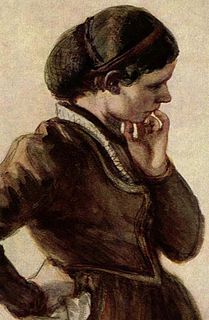
A top hat, beaver hat, high hat, silk hat, cylinder hat, chimney pot hat or stove pipe hat, sometimes also known by the nickname "topper", is a tall, flat-crowned, broad-brimmed hat, worn by men from the latter part of the 18th to the middle of the 20th century. By the end of World War II, it had become a rarity in ordinary dress, though it continued to be worn in specific instances, such as state funerals, also by those occupying prominent positions in the Bank of England, by certain City stock exchange officials and occasionally when passing between the Law Courts and Lincoln's Inn, London by judges of the Chancery Division and Queen's Counsel.

A slouch hat is a wide-brimmed felt or cloth hat most commonly worn as part of a military uniform, often, although not always, with a chinstrap. It has been worn by military personnel from many different nations including Australia, Britain, India, New Zealand, Southern Rhodesia, France, the United States, the Confederate States, Germany and many others. Australia and New Zealand have had various models of slouch hat as standard issue headwear since the late Victorian period.

The kepi is a cap with a flat circular top and a peak, or visor. Etymologically, the term is a loanword of the French képi, itself a re-spelled version of the Alemannic Käppi: a diminutive form of Kappe, meaning "cap". In Europe, this headgear is most commonly associated with French military and police uniforms, though versions of it were widely worn by other armies during the late 19th and early 20th centuries. In North America, it is usually associated with the American Civil War, as it was worn by soldiers on both sides of the conflict.

A campaign hat is a broad-brimmed felt or straw hat, with a high crown, pinched symmetrically at the four corners.
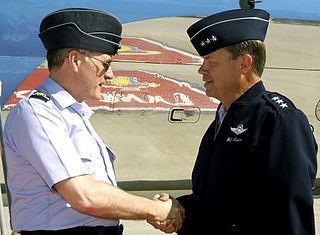
A side cap is a foldable military cap with straight sides and a creased or hollow crown sloping to the back where it is parted. It is known as a garrison cap or flight cap, Schiffchen, pilotka, a wedge cap, or officially field service cap. It follows the style which originated with the so-called Austrian cap in the 1890s. There was also a previous version known as the "torin", which had a much more curved top line when viewed from the side. Both Austrian and torin types were distinguished by the inclusion of a fold-down section for warming the ears and back of the head in inclement weather. These two styles are still used by officers of some British units and continue to include this feature. In appearance the cap is similar to the glengarry, but differs by a lack of the tartan, or check trim, toorie, and ribbons typical of the Scottish cap. It has been associated with various military forces from before World War I until the present day; as well as various youth organizations. A convenient feature of this cap is that when the owner is indoors and no coat-hook is available, it can be easily stored by folding it over the belt or, unofficially, by tucking it under a shoulder strap.

A peaked cap, forage cap, barracks cover or combination cap is a form of headgear worn by the armed forces of many nations, as well as many uniformed civilian organisations such as law enforcement agencies and fire departments. It derives its name from its short visor, which was historically made of polished leather but increasingly is made of a synthetic substitute.
The uniform and insignia of the Boy Scouts of America (BSA) gives a Scout visibility and creates a level of identity within both the unit and the community. The uniform is used to promote equality while showing individual achievement. While all uniforms are similar in basic design, they do vary in color and detail to identify the different membership divisions of Cub Scouting, Scouts BSA and Venturing. Many people collect BSA insignia such as camporee and jamboree emblems, council shoulder strips and historical badges.
A party hat is generally a playful conical hat made with a rolled up piece of thin cardboard, usually with designs printed on the outside and a long string of elastic acting like a chinstrap, going from one side of the cone's bottom to another to secure the cone to the person's head. Its name originates with its use: Party hats are worn most often at birthday parties, especially by the guest of honor, with a significant minority being worn for New Year celebrations. In Britain the hat is made of paper and is the shape of a crown, and is most typically worn during a Christmas dinner. The party hat has its origins in the dunce cap worn by misbehaving or poorly performing schoolchildren from the mid-19th century to the early 20th century, with its festive decoration and society's positive attitude toward the wearer indicating a relaxation, abrogation, or even reversal of certain social norms: During the occasion in question, the wearer is permitted or encouraged to engage, rather than discouraged from engaging, in frivolous and foolish behavior for which the required wearing of the dunce cap would in other situations constitute a punishment.
Party hats have originated in England

Full dress uniform, sometimes called dress uniform, is the most formal type of military uniform, reserved for parades, ceremonies, official receptions, and other special occasions of the most formal level, including private ones such as marriages and funerals. Full dress uniforms often goes with order insignias and full size medals. In Western dress codes, full dress uniform is a permitted supplementary alternative corresponding to the civilian white tie for evening wear or morning dress for day wear - sometimes collectively called full dress - although military uniforms are the same for day and evening wear.

The uniforms of the United States Navy include dress uniforms, daily service uniforms, working uniforms, and uniforms for special situations, which have varied throughout the history of the navy. For simplicity in this article, officers refers to both commissioned officers and warrant officers.
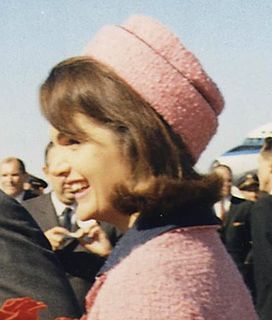
A pillbox hat is a small hat, usually worn by women, with a flat crown, straight, upright sides, and no brim. It is named after the small cylindrical or hexagonal cases that pills used to be sold in.

A mariner's cap, variations of which are known as skipper cap, Greek fisherman's cap, fiddler cap or Breton cap, Lenin cap and Mao cap, is a soft, flat-topped cap with a small visor, usually made from black or navy blue wool felt, but also occasionally from corduroy or blue denim. It is distinguished from similar caps, such as the peaked cap and maciejówka, by its soft, unstructured crown. It is often associated with seamanship and maritime settings, especially fishing, yachting and recreational sailing. It has become popular amongst the public in general, rather than staying isolated as an occupational hat. One example of it being put in prominence of popular culture was when it was worn by John Lennon during the British Invasion of the mid-1960s.

Workwear is clothing worn for work, especially work that involves manual labour. Often those employed within trade industries elect to be outfitted in workwear because it is built to provide durability and safety.

A boonie hat, also known as giggle hat, is a form of wide-brim hat commonly used by military forces. Its design is similar to a bucket hat but with a stiffer brim. Often a fabric tape band of 'branch loops' is sewn around the crown of the hat. This 'foliage ring' is meant to hold additional vegetation as camouflage. A strap provides stability. The crown may be vented with eyelets or small mesh panels. Snaps may also be provided with which to fix the brim in the style of an Australian bush hat.
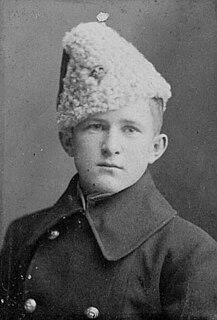
The Canadian military fur wedge cap, "envelope busby", or colloquially "The Astrakhan" is a uniform hat worn by the Canadian military and RCMP. The outside of the cap is entirely covered in real or synthetic fur and is shaped like a wedge. When not being worn the cap folds flat. The cap is about 8 inches (200 mm) high but is normally worn with the apex of the wedge shape depressed back into the interior of the cap to form a longitudinal trough at the crown, reducing the overall height. Often the cap is patterned such that the front of the crown will be slightly higher than the back. On one side of the military style fur wedge cap hangs a flat flap made of cloth or wool that extends from the crown to the bottom of the cap, known as the "bag". The colour of the "bag" was determined by the regimental colours. The bag is very similar to that worn with the busby. Because of the cap's passing resemblance to the hussar busby author and researcher James J. Boulton dubbed it the envelope busby. Still, whatever influence the busby may have had on its design, the fur wedge cap pattern was "distinctly Canadian."
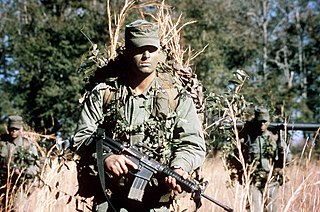
A patrol cap, also known as a field cap, is a soft kepi with a stiff, rounded visor, and flat top, somewhat similar to a baseball cap, worn by the military personnel of some countries in the field when a combat helmet is not required.
The uniforms of the United States Army distinguish soldiers from other service members. U.S. Army uniform designs have historically been influenced by British and French military traditions, as well as contemporary U.S. civilian fashion trends. The two primary uniforms of the modern U.S. Army are the Army Combat Uniform, used in operational environments, and the Army Service Uniform, worn during formal and ceremonial occasions.
A bellboy is a hotel porter.

A sailor cap is a round, flat visorless hat worn by sailors in many of the world's navies. A tally, an inscribed black silk ribbon, is tied around the base which usually bears the name of a ship or a navy. Many navies tie the tally at the rear of the cap and let the two ends hang down to the shoulders as decorative streamers. In the Royal Navy the tally is tied off in a bow over the left ear and in the early 20th century it was customary when going on shore leave to tie a small coin in the bow to make it stand out. In wartime, as a security measure, many navies replace the name of the ship with a generic title. The cap may be further embellished with a badge, cockade or other accessory. Visorless caps of this kind began to be worn in the mid 19th century.


